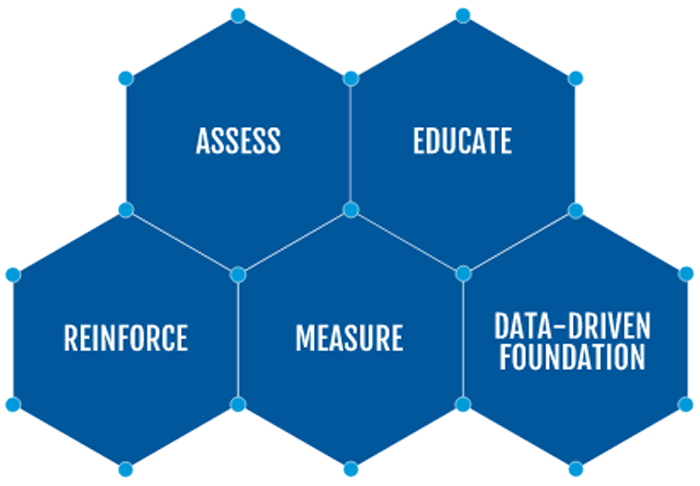Your new HQ needs protecting… from the office to kitchens and spare rooms - in the new reality of distributed working, your people are your last line of defence.
But with the right data-driven training they can also be your everyday, cybersecurity heroes.


Software is only the beginning - security works best when it’s ingrained in the culture of your organisation. Are your employees a strong line of defence?
With proven, data driven, targeted training programs, you can turn your team into the cybersecurity heroes you need, reduce incidences of phishing attacks - and malware infections - by up to 90%.
50% of CISOs do not believe that their organisation is prepared to deal with an attack. But as cyber criminals become more sophisticated and relentless in their tactics, the level of risk has never been higher.
Our recent global survey of 1,400 CISOs showed that:
Building a security culture is essential for creating sustained behaviour change that transforms your people from targets to a strong last line of defence.
83% of survey respondents said their organisation experienced a successful email-based phishing attack in 2021, up from 57% in 2020.
But, with every business facing its own unique challenges, no two security awareness training programs can be the same.
How well prepared are users? Empower your security strategy with exclusive insights into user behaviour.
Even once you know where your peoples’ weaknesses lie, keeping them up-to-date and ahead of the game is just as crucial to protecting your data, your brand, and ultimately, your bottom line. We have curated a few awareness packs that provide you with a four week, easy to deploy security awareness plan, including: videos; interactive materials; email templates, and more!
Don’t let lowered click rates fool you into security awareness complacency.
By delivering engaging, tailored security curriculums based on unique user risk profiles, businesses can build a culture of security. For the right response, you’ve got to give the right education to the right people. Don’t just train your users to check the box. Use proven education to engage them and change their behaviour.
Take the next step and find out how you can drive real behaviour change within your organisation.
Since 2015, the cost of phishing has more than tripled - pushing the average annual cost of phishing from $3.8 million in 2015 to $14.8 million in 2021. By empowering your heroes to be hyper aware and report suspicious attacks, you can make them a core function of your IT security strategy regardless of where or who they are - or what device they’re using. In our latest survey, we discovered:
Start empowering your users - make them part of your security team regardless of where they are or what device they’re using.
Stakeholders want to ensure compliance while seeing user knowledge and behaviour improve, but more importantly, they want to see the impact to the organisation’s costs and bottom line. Using real-time insights on program process as well as comparisons against your industry peers, C-level friendly reporting can help you get that important buy-in. For example, before selecting a vendor, you need to be asking:
Settle stakeholder fears and reveal the truth about your user knowledge and
security behaviour.

With so many claims and offers in the market, selecting a security awareness platform can be difficult. But with our latest consideration guide you’re able to ask the right questions.